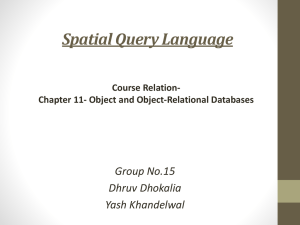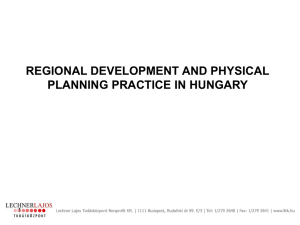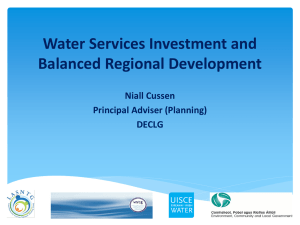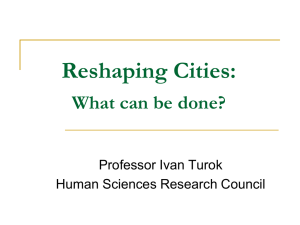Slides
advertisement
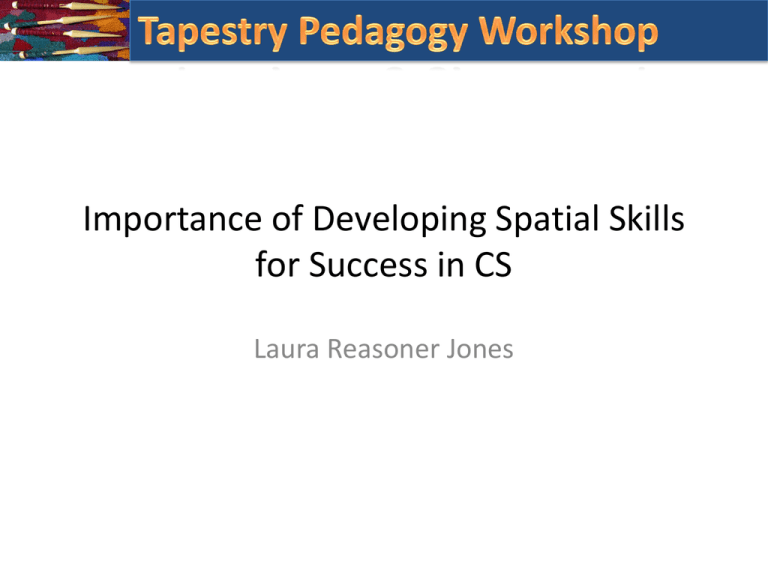
Importance of Developing Spatial Skills for Success in CS Laura Reasoner Jones Well-developed spatial skills lead to success in • • • • • • • • Engineering and Technology Computer Science Chemistry Computer-Aided Design Mathematics Geospatial technologies Neurosurgery And much more Because they represent and manipulate information in problem-solving. Gender Differences in Spatial Skills ~100 years of research finds significant gender differences favoring males in 3-D spatial skills • Differences are particularly robust in mental rotation and spatial perception (Linn and Peterson, 1985) • Experiences as youth seem to explain some of the differences (Baenninger and Newcombe, 1995, Voyer, Nolan, and Voyer, 2000, and Terlecki and Newcombe, 2005) • Training seem to improve female performance to some degree (Baartmans and Sorby, 1996) Components of Spatial Thinking • Mental Rotation—rotate two and threedimensional figures • Spatial Perception—determine relationships with respect to the orientation of her/his body • Spatial Visualization—multi-step manipulations of objects and parts both individually and holistically (AWE) How can you improve measurable spatial skills? Teach students to: • • • • Analyze the components of the task Rotate the item into congruence Compare objects Respond Important Experiences for the Development of Spatial Skills Play with construction toys/Legos Shop, drafting, and mechanics classes 3-D computer games Certain sports Mathematics skills Sketching Repeated practice with general spatial skills Importance for Computer Science Spatial ability allows you to: • Navigate in virtual space • Develop mental models and maps • Move between files and functions more easily • Navigate through text/code more easily • Figure out where to go next • 3-D Printing……. How can you improve functional spatial skills? • Practice • Experience • Build confidence Tests for Spatial Abilities: • Mental Cutting Test • Mental Rotation Test (Vandenberg and Kuse, 1978) Purdue Spatial Visualization Test: Rotations Project Talent Study (APA, 2009) What you can do Make thinking visible—use the Think-Aloud technique Teach mental rotation, 2-D and 3-D drawing (Sorby) Use E3 Materials (Everyday Examples in Engineering) Sorby’s Engineering Graphics Make 2D to 3D and 3D to 2D a part of the classroom life • • Logic groups Modeling as part of the programming process Promote and use free CAD software • Encourage exploration • Allow experimentation & failure http://www.sketchup.com/learn/videos?playlist=58 https://tinkercad.com/video Contact information: Laura Reasoner Jones lrjones806@gmail.com



